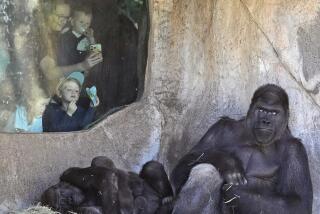Dinosaurs were neither cold-blooded nor warm-blooded, study finds
Dinosaurs have long been thought of as slow, lumbering, cold-blooded animals, akin to reptiles like the crocodile and the lizard – but there’s been increasing signs in recent years that they may have been warm-blooded, as mammals and birds are. New research out of the University of New Mexico in Albuquerque, however, shows that these long-dead creatures may have been a little bit of both.
The new findings in the journal Science hint that dinosaurs’ metabolic systems might be far more complicated than previously thought.
Researchers have long thought the ancient lizard-like beasts were ectothermic (colloquially referred to as cold-blooded) – that is, they rely on the temperature outside of their bodies to help regulate their internal temperature. That’s why many reptiles tend to turn sluggish in cold weather. Mammals, on the other hand, are endothermic (or warm-blooded), in that we’re able to regulate our own temperature from within. Keeping the body’s internal temperature high requires a lot of energy, but it also means mammals can be more active and grow faster.
But researchers have examined dinosaur bones and found signs of surprisingly fast growth – which shouldn’t be achievable with an ectothermic animal because it requires so much energy. Was it possible the creatures were actually endothermic?
For this paper, the scientists decided to perform a metabolic census of sorts. They compared the growth rate, adult size and metabolism of 381 vertebrate species, living and extinct, including 21 dinosaur species. The idea was that the higher the growth rate, the higher the animal’s rate of metabolism would probably be. And higher metabolisms would probably tend to be endothermic, warm-blooded systems.
Sure enough, they found that high growth rates seemed to match up with the higher metabolisms of warm-blooded animals, whereas lower growth rates were linked to the lower metabolic rates of cold-blooded animals. The dinosaurs seemed to sit right in the middle, overlapping with some endothermic and some ectothermic animals. The scientists aptly called them “mesotherms” (“meso” basically means “middle” in Greek.)
There are some intermediate, mesothermic species that exist today, the authors point out: Animals such as tuna and the leatherback turtle are able to somewhat regulate their internal temperatures, though not to the extent that warm-blooded animals do.
“Dinosaurs dominated the flux of matter and energy in terrestrial ecosystems for more than 135 million years,” the study authors wrote. “Consequently, our results have important implications for understanding ancient Mesozoic ecosystems.”
Need more dinosaurs in your life? Follow me @aminawrite for more news on extinct charismatic megafauna.







